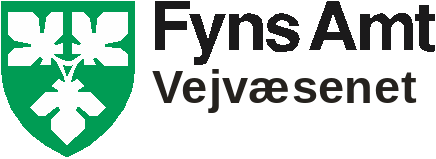UNDERSTANDING HYPOGLYCEMIA (LOW BLOOD SUGAR) HYPOGLYCEMIA ALSO CALLED “LOW
10 NEVER AGAIN UNDERSTANDING THE PAST TOTECHNOLOGY MEMORANDUM OF UNDERSTANDING ADVICE REGARDING THE
THEME UNDERSTANDING COMMUNICATION ACTIVITY THE BRIALLE ALPHABET
UNDERSTANDING THE SOCIAL SCIENCES AS A LEARNING AREA
(RE)UNDERSTANDING EDUCATOR ACCOUNTABILITY PSEUDO VS AUTHENTIC ACCOUNTABILITY RANDY L
1 INTRODUCTION YOUR KNOWLEDGE AND UNDERSTANDING OF YOUR LOCAL
Understanding Hypoglycemia
Understanding Hypoglycemia
(low blood sugar)
Hypoglycemia also called “low blood glucose” or “low blood sugar” is one of the most frequent complications of diabetes and can happen very suddenly. Hypoglycemia occurs when a student’s blood glucose level falls too low, usually as a result of administering too much insulin, skipping or delaying meals or snacks, not eating enough food as prescribed in the meal plan, exercising too long or too intensely, or a combination of two or more of these factors. It is more likely to occur before lunch, at the end of the school day, or during pr after physical education classes.
** Hypoglycemia, which often cannot be prevented, is the greatest immediate danger to students with diabetes.
Hypoglycemia usually can be treated easily and effectively. If it is not treated promptly, however, hypoglycemia can lead to unconsciousness and convulsions and can be life threatening. Early recognition of its symptoms and prompt treatment is necessary for preventing severe symptoms that may place the student in danger.
Hypoglycemia is not always preventable, and not all students, especially young children, will recognize its symptoms with every episode. Therefore, school personnel should be familiar with the symptoms and treatment so that an urgent problem can be handled appropriately.
Hypoglycemia can impair thinking abilities and sometimes can be mistaken for misbehavior. If a student has a sudden change in behavior, becomes lethargic, combative, or unconscious, or is having a seizure, presume that the student has hypoglycemia. Treat the situation as hypoglycemia emergency and check the student’s blood glucose level immediately. If a blood glucose meter is not in the immediate area, or if the blood glucose level is otherwise unknown, treat the student for hypoglycemia.
** The student should never be left alone or sent anywhere alone when experiencing hypoglycemia .
As soon as symptoms of hypoglycemia are observed, give the student a quick-acting sugar product equivalent to 15 grams of carbohydrate, as specified in the students plan. This may include: glucose tablets, glucose gel, 4 oz of juice. Re-check the student’s blood glucose level in 10-15 min. after treatment. Repeat treatment if the blood glucose level still falls below the student’s target range.
Severe hypoglycemia is rare at school and generally can be prevented with prompt treatment when the early signs of low blood glucose is recognized. When hypoglycemia is sever, the school nurse or trained diabetes personnel must respond immediately. Symptoms may include inability to swallow, unconsciousness, unresponsiveness, seizure activity. At this point never attempt to give the student food or a drink or to put anything in the mouth because it could case choking.
If a students become unconscious or experience seizures position them on their side to prevent choking. Immediately contact the school nurse or trained diabetes personnel, who will administer an injection of glucagon if indicated on the school plan.
11 GARCÍA LANDA – UNDERSTANDING MISREADING UNDERSTANDING MISREADING HERMENÉUTICA
13 UNDERSTANDING OF LIMITS AND DIFFERENTIATION AS THRESHOLD CONCEPTS
1595542239UNDERSTANDING_LEXICAL_STRUCTURE_(corrected)
Tags: hypoglycemia (low, when hypoglycemia, hypoglycemia, understanding, blood, called, sugar)
- (TEKST JEDNOLITY) ZARZĄDZENIE NR 362016 REKTORA UNIWERSYTETU KARDYNAŁA STEFANA
- CAPITULO I AGUA P‡GINA 49 PADILLA AF
- NIZAMI GASİLOV BME II MAT 281 DOĞRUSAL CEBIR VE
- NA TEMELJU ČLANKA 30 STAVAK 4 I 5 ZAKONA
- 300 000 JAHRE ALTES GESCHIEBE DER SAALEEISZEIT BEI HÖLTINGHAUSEN
- PEPIN COUNTY HEALTH DEPARTMENT 2015 ANNUAL REPORT MISSION…TO PROTECT
- MODELO DE PROGRAMAS A PRESENTAR FUNDAMENTACION DE LA
- 6º PLANNING DE SEXTO DEL ÁREA DE LENGUA –
- Anexo%20I_solicitud%20ocupacion
- CONFERENZA MATEMATICA E LINGUISTICA RECENZIONE MARIA CRISTINA
- PROGRAM KREATIVITAS MAHASISWA PELATIHAN MATERI GIZI SEIMBANG PADA PENGAJAR
- ROBERT E MCDONALD UNITED SUPERMARKETS PROFESSOR OF MARKETING AREA
- PATHOPHYSIOLOGY OF BLOOD BLOOD SYSTEM INCLUDES THREE COMPONENTS THE
- MINISTERIO DE CIENCIA TÉCNICA E INNOVACIÓN PRODUCTIVA COMISIÓN DE
- ANEXO III SOLICITUD DE ADMISIÓN A LAS PRUEBAS SELECTIVAS
- PELUANG 1 ATURAN PERKALIAN JIKA SUATU PERISTIWA DAPAT TERJADI
- A PACEF MENÚS CUINA CENTRALITZADA – OCTUBRE 2016
- T HE BREADWINNER A BOOK STUDY READ THE
- MODELS OF MARKET SOCIALISM SOCIALIST GOALS 1) EQUALITY OF
- POLIEDROSCONTROL C EJERCICIO Nº 1 ESCRIBE EL NOMBRE DE
- KOMUNALAC DOO 43000 BJELOVAR FERDE LIVADIĆA 14 A OIB
- 7 BYLAW NO 202001 BYLAW NO 202001 BEING A
- INFORMACIÓN PROGRAMA “ABIERTO POR VACACIONES” SEMANA SANTA 2019 ALUMNADO
- CONSULTANTS TO THE PROJECT PROFESSOR TAIEB BELGHAZI TAIEB BELGHAZI
- !doctype Htmlhtml Langen!![endif] head meta Charsetutf8 meta Contentieedge
- 4 ANCIENT HISTORY UNIT 4 CONTRIBUTION TO THE DEVELOPMENT
- HAY QUE COMPROMETERSE LUEGO DE MUCHO TIEMPO VOLVEMOS A
- GROUP 5 JUSTIFICACIÓN DE LA UNIDAD DIDÁCTICA LA UNIDAD
- BESTELLUNG ZUM SICHERHEITSBEAUFTRAGTEN § 22 SGB VII § 20
- CONSEJERIA DE EDUCACION Y CIENCIA DIRECCIÓN GENERAL DE
 I NSTRUKTION NR T102 UDGAVE 04 VINTERTJENESTE UDSTYR TIL
I NSTRUKTION NR T102 UDGAVE 04 VINTERTJENESTE UDSTYR TILZAŁĄCZNIK NR 2 DO ZARZĄDZENIA PREZESA SĄDU REJONOWEGO W
 UNA MANERA DE REALIZAR ESTA FUENTE REGULABLE ES UTILIZANDO
UNA MANERA DE REALIZAR ESTA FUENTE REGULABLE ES UTILIZANDOLA BUSQUEDA DE OPORTUNIDADES EN LA ACCIÓN TERRITORIAL LA
CITIZENSHIP REQUIREMENT FOR EMPLOYMENT WITH GBRMPA SUMMARY AUSTRALIAN CITIZENSHIP
 LOCAL FINANCE NOTICE 20111(R) JANUARY 12 2011 PAGE 0
LOCAL FINANCE NOTICE 20111(R) JANUARY 12 2011 PAGE 0STRATEGIC MANAGEMENT AREA PHD DISSERTATION COMMITTEES STRATEGIC MANAGEMENT DISSERTATIONS
 VLADA REPUBLIKE HRVATSKE ZAGREB 16 RUJNA 2021 PREDLAGATELJ
VLADA REPUBLIKE HRVATSKE ZAGREB 16 RUJNA 2021 PREDLAGATELJREGISTRATION IN ORDER TO REGISTER IN THE CONSULAR REGISTRY
 PABLO DE SANTIS EL ENIGMA DE PARÍS TÍTULO
PABLO DE SANTIS EL ENIGMA DE PARÍS TÍTULO HOW TO DELETE A VOUCHER STEP 1 GO TO
HOW TO DELETE A VOUCHER STEP 1 GO TO NOTE EXPLICATIVE POUR EFFECTUER UNE NOTIFICATION DE MISE SUR
NOTE EXPLICATIVE POUR EFFECTUER UNE NOTIFICATION DE MISE SURGERRA ARTEKO EKONOMIA 1 GERRAOSTEKO EGOERA SOZIOEKONOMIKOA 11GERRAOSTEKO KRISIA
TANTÁRGY NEVE KOMMUNIKÁCIÓKONFLIKTUSKEZELÉS KÓDJA NMPPS716G2 KREDITSZÁMA 2 A TANÓRA
 DATA FORM FOR CATEGORIZATION OF PRODUCT TYPES IN THE
DATA FORM FOR CATEGORIZATION OF PRODUCT TYPES IN THE DOCUMENT SOURCE DE GOUVERNANCE PAR LES POLITIQUES RAISON D’ÊTRE
DOCUMENT SOURCE DE GOUVERNANCE PAR LES POLITIQUES RAISON D’ÊTREUTOPÍA LOS PLEITOS DE CALDERÓN EDUARDO IBARRA
MODELO DE CERTIFICADO DE VERACIDAD DE LOS DATOS (APARTADO
ZGIERZ DNIA 17062021R ZARZĄDZENIE NR 542021 PREZESA SĄDU REJONOWEGO
 PROCEDIMIENTO DE TRABAJO SEGURO CON PUENTES GRÚA E IZAJES
PROCEDIMIENTO DE TRABAJO SEGURO CON PUENTES GRÚA E IZAJES